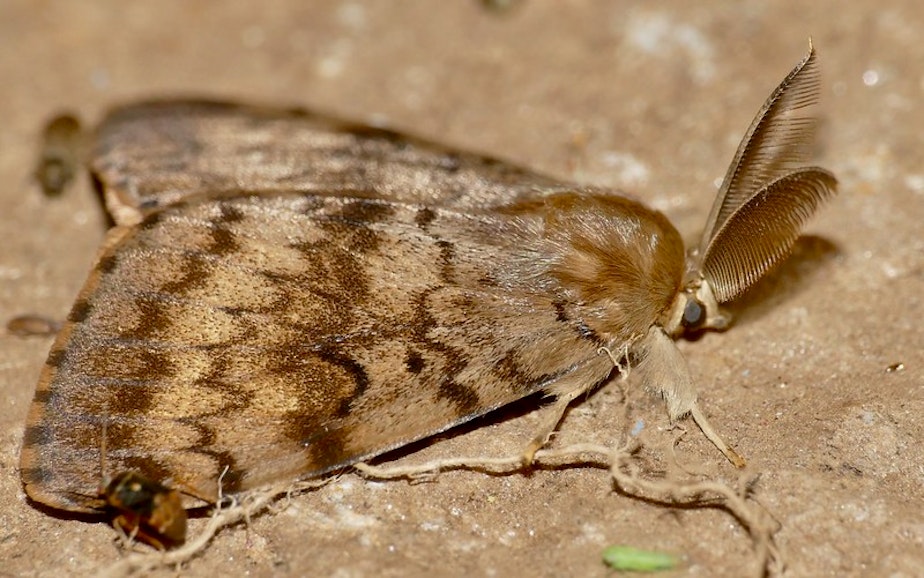Emergency declared for spongy moth invading Washington state

A foreign invader, of the pest variety, is posing imminent danger to plants in Washington state. The spongy moth has been sighted in Thurston and Skagit counties. The state is now revving up airplane engines to go spray two large areas to get rid of the moths.
"This imminent danger of infestation seriously endangers the agricultural and horticultural industries of the state of Washington and seriously threatens the economic well-being and quality of life of state residents," Gov. Jay Inslee stated in an emergency proclamation issued Wednesday.
RELATED: An invasive species, on San Juan Island?
The state is specifically calling out two spongy moth hot spots: a 920-acre area in Concrete, and 1,383 acres at Steamboat Island Road and Highway 101 near Olympia. Last year, 103 spongy moths were captured in these areas.
Under the declaration, the Department of Agriculture will begin spraying a bacteria that kills the spongy moth on Friday in Thurston County. The Skagit County site will be sprayed in the coming month.
Sponsored
The spongy moth is also known as Lymantria dispar L., and previously was referred to as the "gypsy moth." The Entomological Society of America changed the name in 2021 because it used a pejorative term for Romani people. The name was officially changed in 2022 to spongy moth, which refers to the moth's sponge-like egg masses.
It's one of the most destructive forest pests introduced into the United States, according to the Washington State Department of Agriculture. Its caterpillars can attack more than 300 species of trees and shrubs. The department points to Massachusetts as an example of the threat — the moths defoliated one-third of that state's trees in 2017, and the next year, Massachusetts lost even more hardwood and oak trees.
Washington state's proclamation directs the Department of Agriculture to spray a bacterial pesticide that attacks caterpillars. Airplanes will spray Btk (bacillus thuringiensis var. kurstaki) over the affected areas. The department says it doesn't harm other animals, such as birds or bees, or humans.
Agriculture officials say the spray is sticky, so nearby residents may want to cover cars and close their windows within 30 minutes of the spray. Otherwise, it can be washed off with soap and water.
Sponsored
Washington state began a spongy moth detection program 50 years ago. It has monitored for the invasive species and sprayed to eradicate them ever since.
KUOW's Dyer Oxley contributed to this story.
Editor's note, 11 a.m. on Monday, 5/13/2024: After receiving feedback from a reader, we added more information about how and why the spongy moth's name was changed.




